What would proposed new voting maps mean for Summit County, Greater Akron?
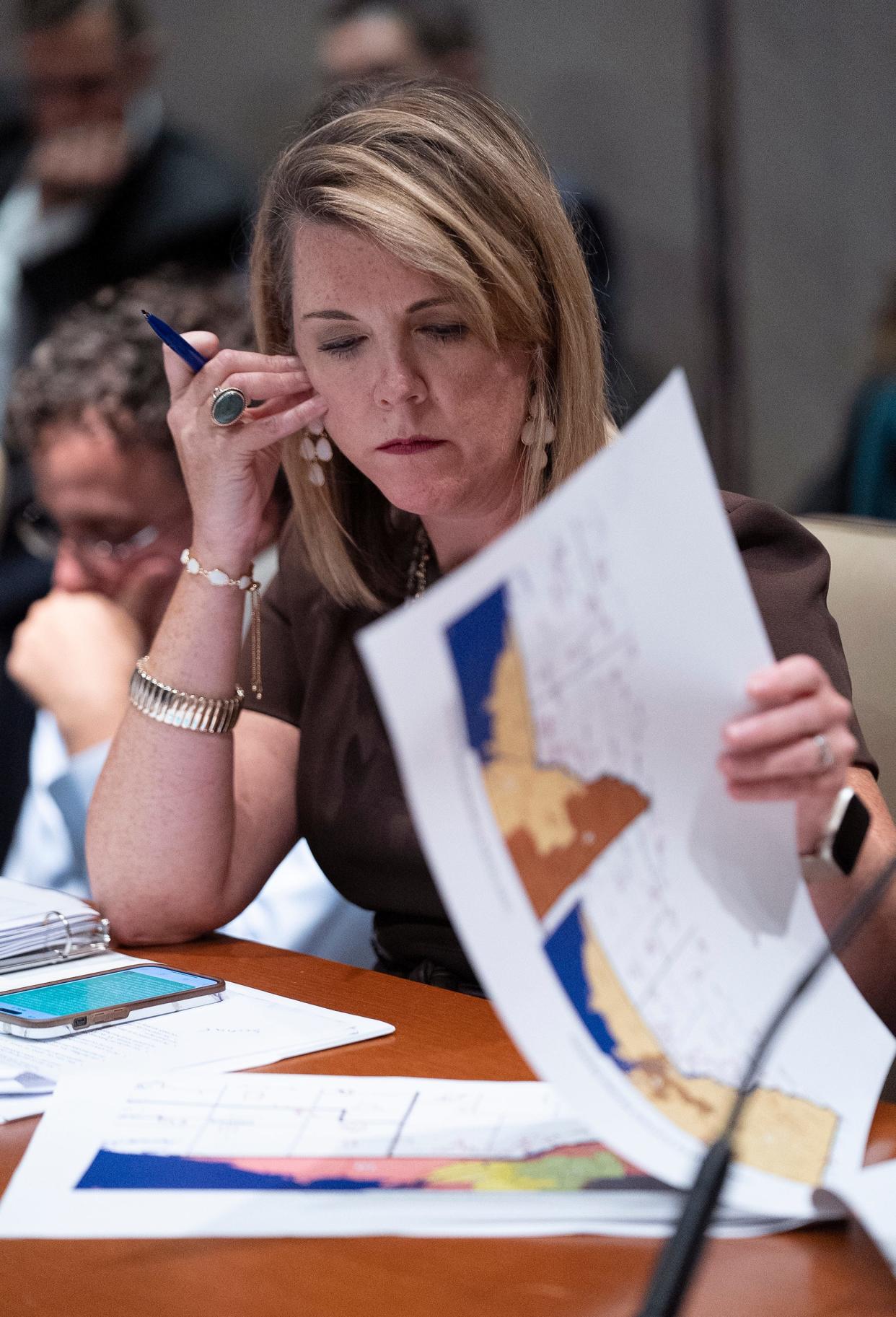
Ohio Republicans have dismissed Democrats’ proposals for new voting maps in favor of their own version that divides Akron among three House districts.
The new maps would be used for 2024 Statehouse races after Republicans in control of the Ohio Redistricting Commission failed to achieve constitutionality with their maps, due to gerrymandering identified in multiple Ohio Supreme Court rulings, or win any Democratic support following the 2020 decennial census.
Democrats introduced their dead-on-arrival plans Tuesday. They say their maps more closely align with the will of voters who approved a constitutional amendment calling for proportionality. Republicans are challenging that partisan test and arguing for the use of election results more favorable for their party. Gov. Mike DeWine, who is missing redistricting commission meetings after contracting COVID-19, handily beat Democrat Nan Whaley last year.
Analyses of new GOP-designed maps introduced Wednesday give Republicans an edge in 70% of the 33 state Senate races and 63% of the House races. The Democrat maps give Republicans lesser advantages of 58% in the Senate and 57% in the House.
Democrats' plans for new House maps would split Akron in half due to its size. Republicans would divide the city into three districts while creating what appear to be more competitive races where the GOP has squeaked out narrow victories in recent election cycles.
Impact on Summit County
The Democratic plans would give their candidates a better shot at controlling the two Senate seats that cover Summit County. The GOP map would continue to concede one seat that includes Akron to the Democrats while giving Republicans a tough but manageable race to hold territory in the county’s western and northern reaches.
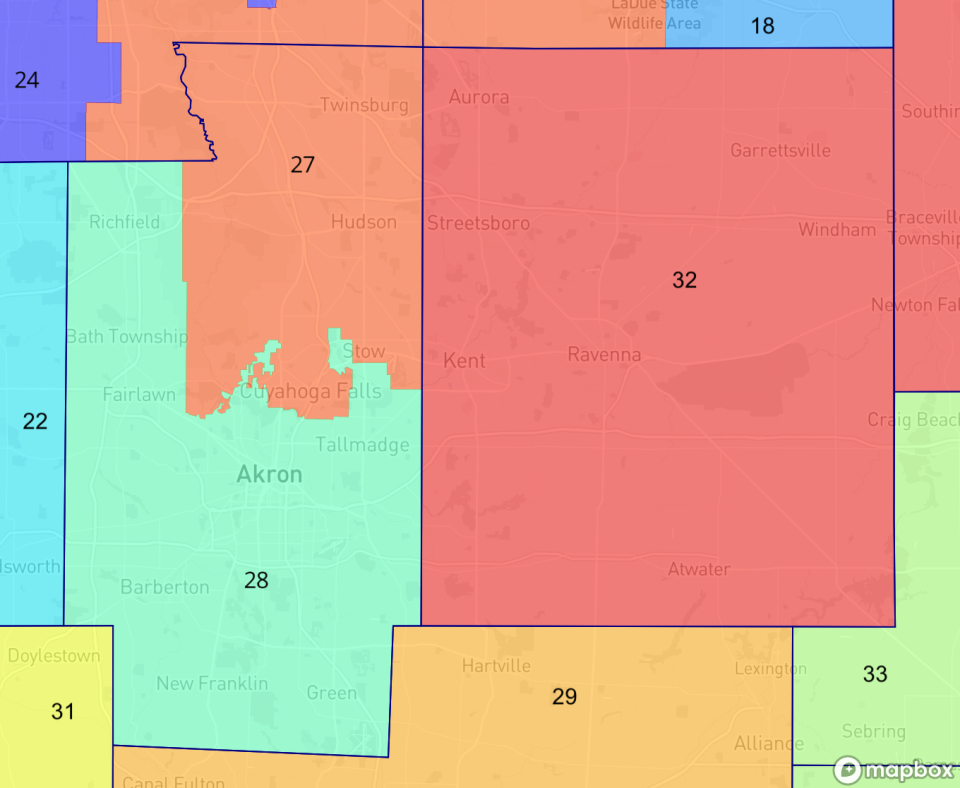
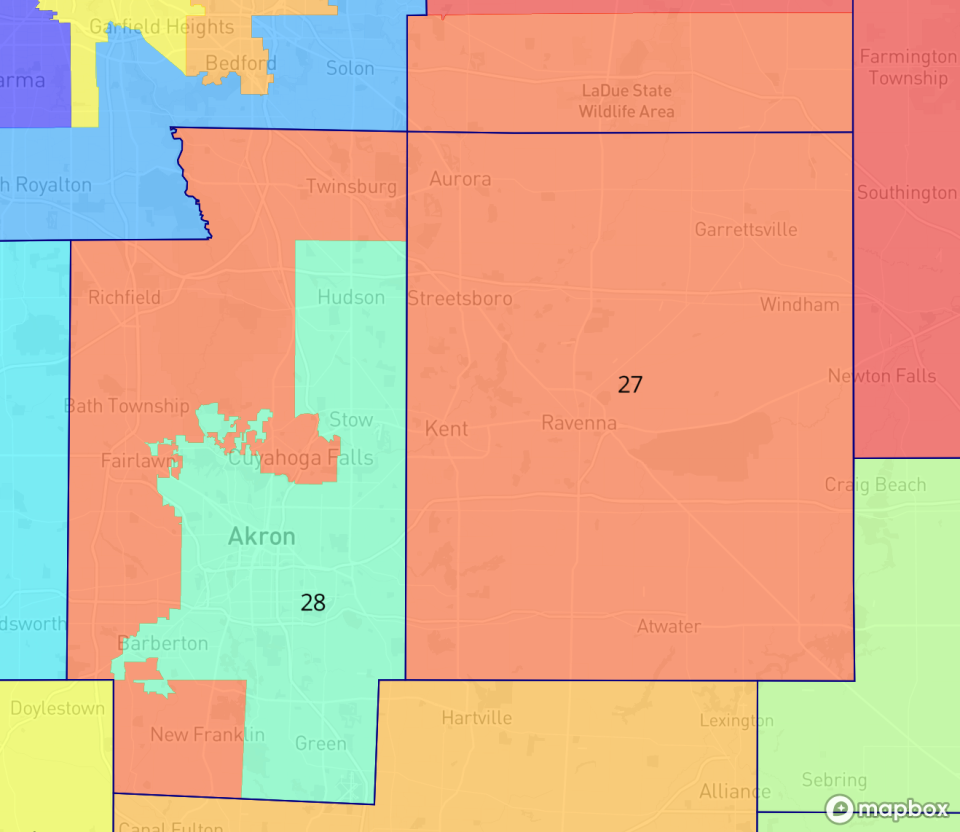
The GOP's proposed maps for the House would create toss-ups in the 31st and 32nd districts, which they currently hold in Summit County, while maintaining the Democrats’ strong advantage in the 33rd, which covers much of Akron. Democrats would get less of an advantage to hold the territory they won back a few elections ago from Republicans in the 34th, which includes Hudson and Stow.
The Democrats’ plan for the House, while also producing a tight match-up in the 34th, would make for more predictable races elsewhere with Democrats holding the 32nd and 33rd, which would split Akron, and Republicans holding the 31st stretching south to the Stark County line.
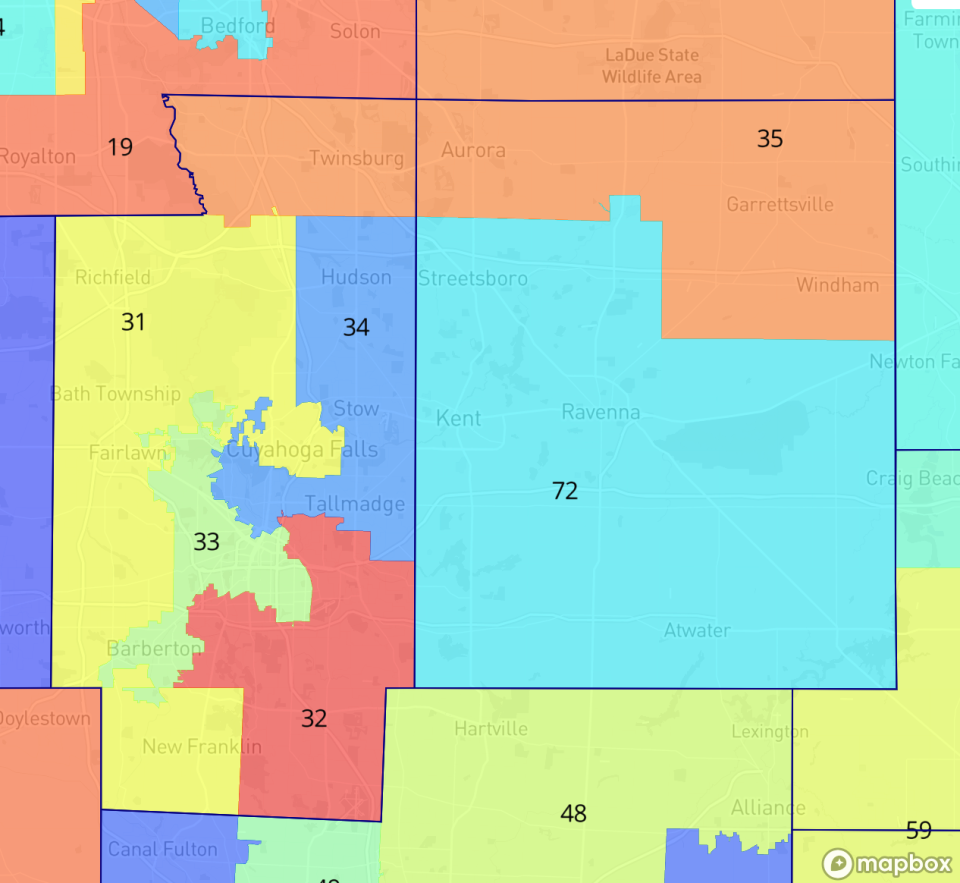
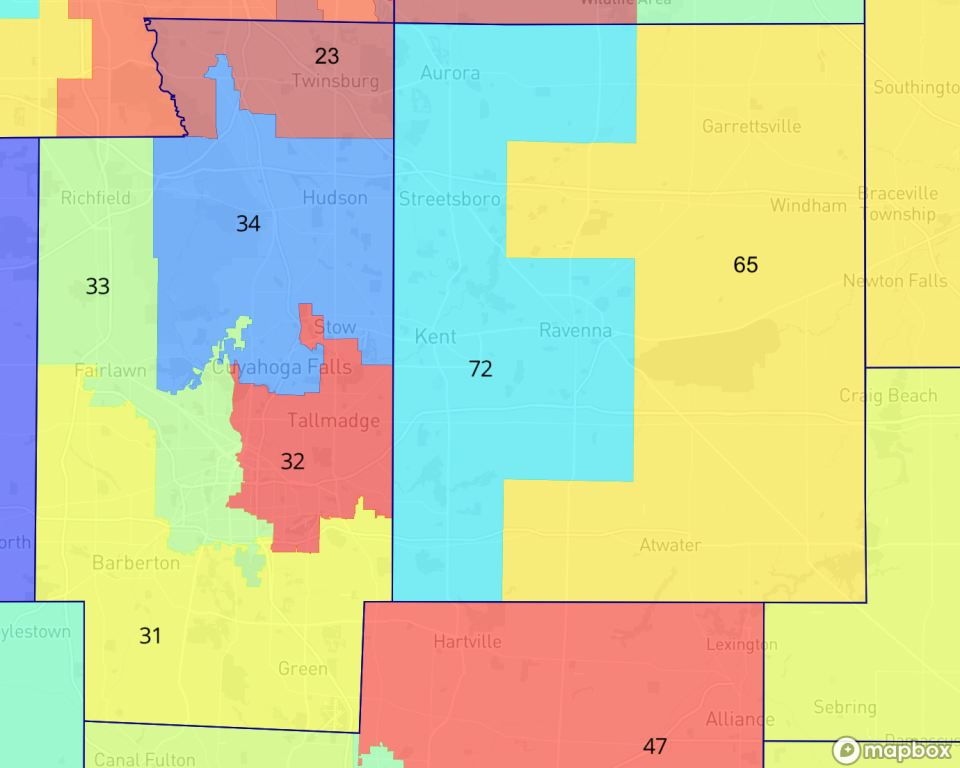
What the Republicans' plan does for next year’s races
GOP maps, if unchanged, have the best shot of becoming reality for at least the next election cycle. (The GOP-dominated redistricting commission would need votes from its two Democrats for the maps to remain through 2030.)
The GOP plan for a new House map also dices up Akron, but into three instead of two major pieces. Rep. Tavia Galonski, D-Akron, would be put in a reliably more liberal 33rd House district that would continue to cover Barberton and Akron’s western neighborhoods — plus the University of Akron, downtown and East Akron, where she lives.
A new 34th district, currently held by Casey Weinstein, D-Hudson, would continue to lean left while trading Cuyahoga Falls for Akron’s Merriman Valley and North Hill neighborhoods. Weinstein is term-limited from running for the Ohio House again next year. He flipped his current district for Democrats and has fended off some of the stiffest challenges in the state from Republicans bent on recapturing the territory that includes Hudson and Stow.
The rest of Akron — Goodyear Heights and Ellet — would slide into a new 32nd House district, which soon will be without a representative after Bob Young, R-Green, resigned effective Oct. 2 amid multiple charges of domestic violence followed by allegedly violating a restraining order.
Rep. Bill Roemer's current 31st House district is a reliably Republican district covering the county's western communities. The new 31st House district would lose Twinsburg and Northfield, having little overall partisan impact. What's more consequential to his re-election, though, is the addition of conservative voters in New Franklin and even more liberal voters in Cuyahoga Falls — a shift that would make his district more of a toss-up.
In the Senate, the GOP’s plans for State Sen. Kristina Roegner's district would trade the populous Summit County communities of Hudson, Stow and Green for all of Portage County and the southern edge of Geauga County. That new, more sprawling 27th Senate district would slightly favor Republicans while the 28th, after gaining Hudson, Stow and Green in exchange for Portage County, would remain comfortably to the left.
Roegner, re-elected in 2022, can't run for the Senate again in 2026.
Statewide partisan breakdown of proposed maps
In all statewide office races last year, Republicans swept the board 60-40 over Democrats. And U.S. Sen. J.D. Vance, a Republican, beat former U.S. Congressman Tim Ryan, a Democrat, 53-47. Although results vary by race and candidate, Republicans scored about 57% of votes in statewide races last year.
In the current Ohio Legislature, which advocates for reform have argued is a product of extreme partisan gerrymandering, Republicans hold 79% of Senate seats and 68% of House seats.
But Ohio Auditor Keith Faber, a Republican on the redistricting commission, said this week that "there's also an argument that you don't get to the magical, mystery ratio depending on how you draw the rest of the maps.”

The new maps need done quickly with the deadline for candidates to file on Dec. 20, and a lot of preparations for boards of elections before that can happen.
Observers can see each party's proposal for new maps loaded by their respective political parties into interactive mapping software at the following links.
Democrats' House plan: https://davesredistricting.org/maps#viewmap::69f6caca-121c-45c7-89ac-96b7dfba0467
Democrat's Senate plan: https://davesredistricting.org/maps#stats::10405b2f-6135-4026-8ad8-16e0566f206a
Republicans' House plan: https://davesredistricting.org/maps#viewmap::4c0be359-5bde-4b98-9f3c-892b0bd27ee6
Republicans Senate plan: https://davesredistricting.org/maps#stats::6d6a0ec4-e309-4831-964e-33a2a909d7e5
Reach reporter Doug Livingston at dlivingston@thebeaconjournal.com or 330-996-3792.
This article originally appeared on Akron Beacon Journal: Each party wants to divide Akron in latest redistricting map plans

